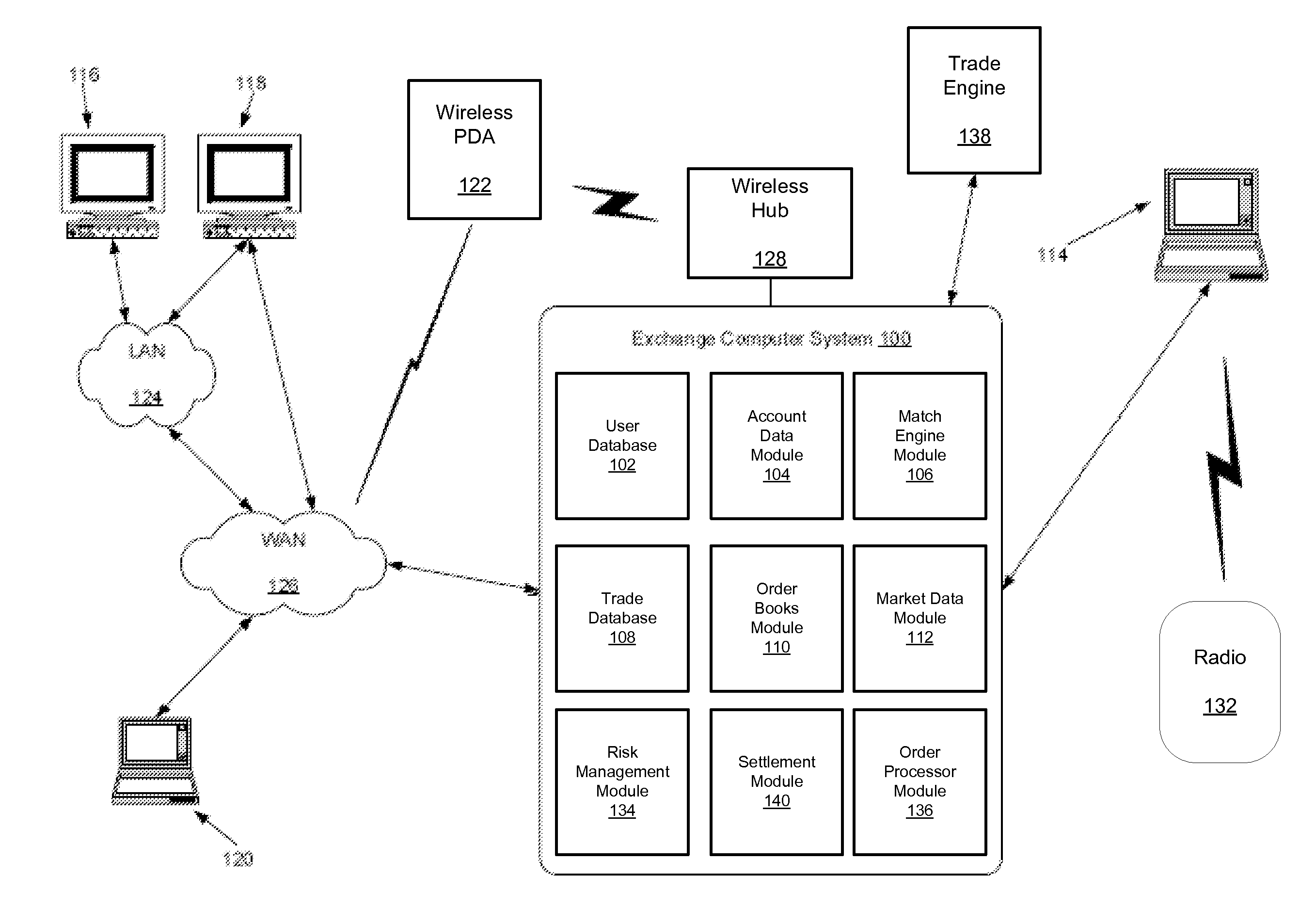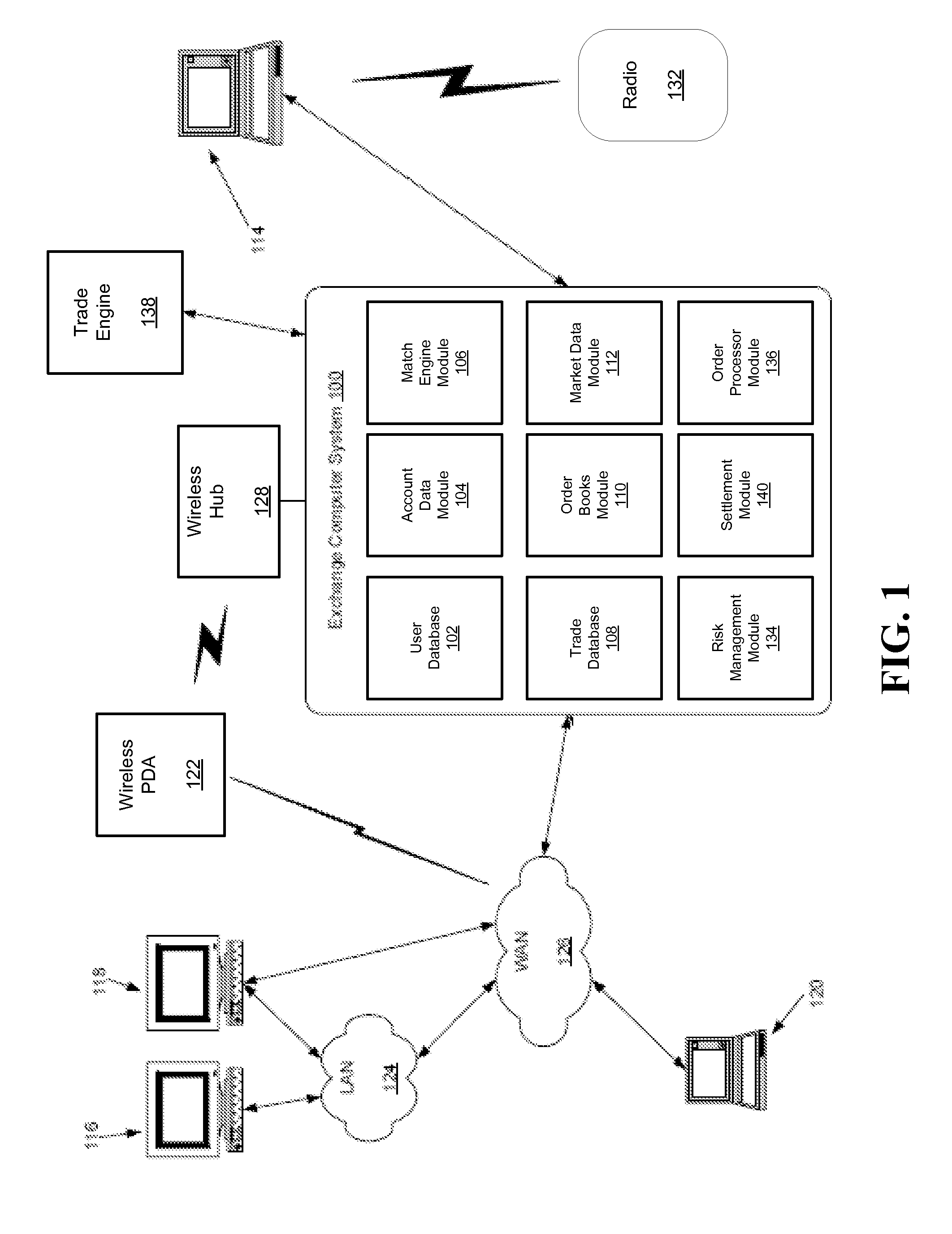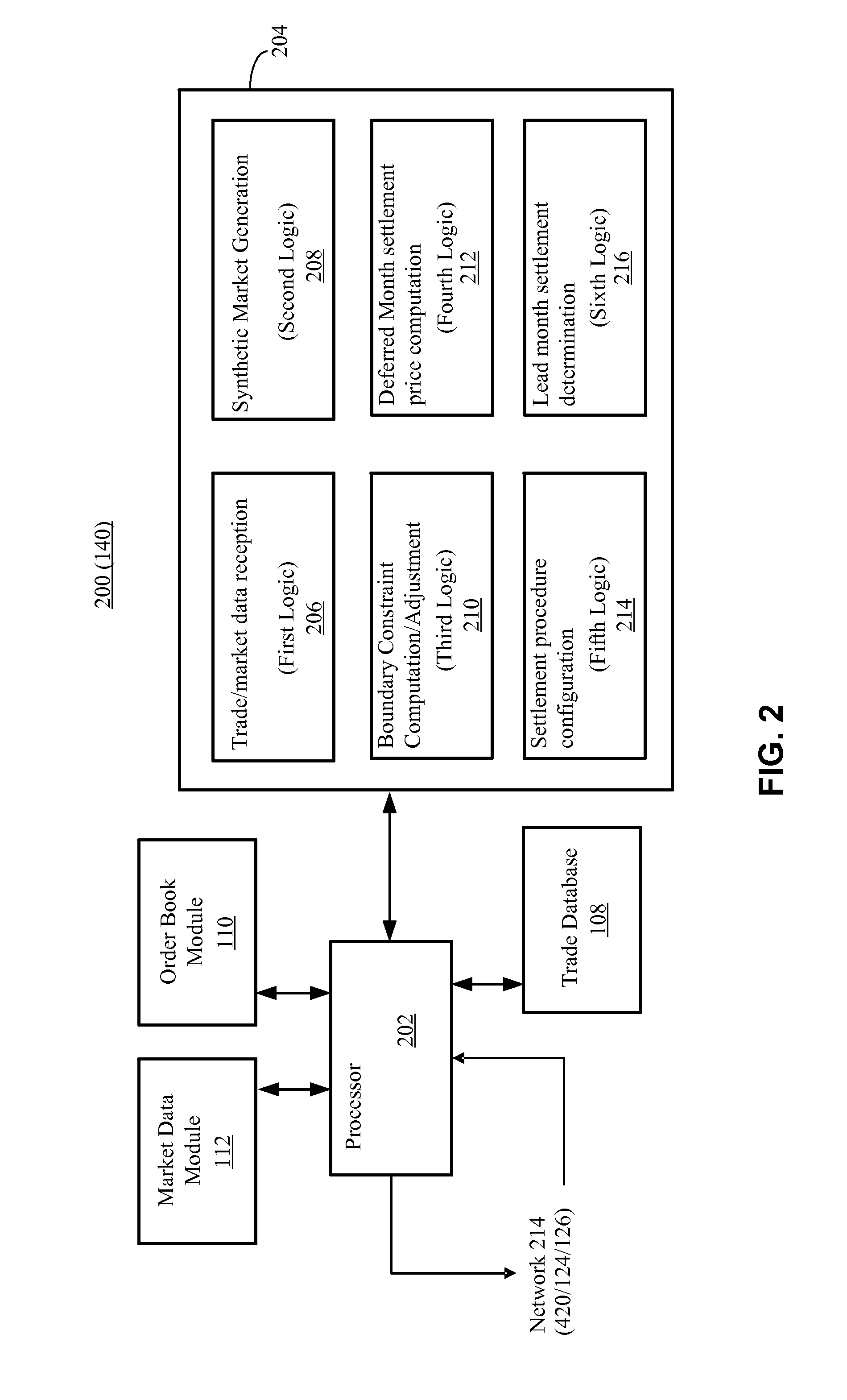Boundary Constraint-Based Settlement in Spread Markets
- Summary
- Abstract
- Description
- Claims
- Application Information
AI Technical Summary
Benefits of technology
Problems solved by technology
Method used
Image
Examples
Embodiment Construction
[0017]The disclosed embodiments relate to determining settlement prices for constituent contracts of spread instruments. Synthetic market data is generated for a constituent contract of a set of spread instruments. The synthetic market data is generated based on market data indicative of bid-offer values (i.e., bid-ask values) for the set of spread instruments. The synthetic market data is used to determine boundary constraints on the settlement price for the constituent contract. The best (i.e., highest) bid in the synthetic market corresponds with a lower boundary constraint for (or bound on) the settlement price, while the best (i.e., lowest) offer in the synthetic market corresponds with an upper boundary constraint. The settlement price for the constituent contract may then be determined by computing an average or midpoint of the lower and upper boundary constraints.
[0018]The synthetic market data may include a set of synthetic bids and a set of synthetic offers for the constit...
PUM
 Login to View More
Login to View More Abstract
Description
Claims
Application Information
 Login to View More
Login to View More - R&D
- Intellectual Property
- Life Sciences
- Materials
- Tech Scout
- Unparalleled Data Quality
- Higher Quality Content
- 60% Fewer Hallucinations
Browse by: Latest US Patents, China's latest patents, Technical Efficacy Thesaurus, Application Domain, Technology Topic, Popular Technical Reports.
© 2025 PatSnap. All rights reserved.Legal|Privacy policy|Modern Slavery Act Transparency Statement|Sitemap|About US| Contact US: help@patsnap.com



